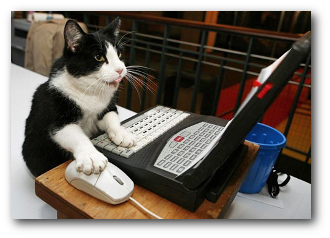Personae (or personas if you prefer) are an important part of a user centered design process, and one of the key ways in which usability experts can communicate their findings. I’m going to look at how to make a persona, and what the advantages are to you, and the design team
How to make a Persona
We’re going to assume you’ve already take some steps towards understanding the users. You could have designed a survey, or performed one on one interviews, and now you have a pretty good understanding of who your users are, and what they think about your product.
First we need to divide the people into demographics. Did all the women over 50 find your game idea too violent? Did most of the children think it sounded like it would get dull? Try to focus on the key areas where people picked up on things, and ignore the outliers for now – you want to turn all your results into 3-5 personae, of which only one or two will be the ‘key’ users you are designing for.
Now you want to write about these groups you’ve divided the people into. Make them real people; give them names, occupations and a back story. Make their name an in-joke, that’ll make you laugh, but no-one else will ever get (Hello Bibi Andersson). Include some text about how they’d use the product, and what they’d expect from it. Also include some concerns that they may have. You want these people to be treated as real people, and so they need to be complete! Include a picture, so that people can see the people they are designing for.

pictures make everything more fun
Why you should be making personae
There are many advantages to making usability and user experience personae. As a usability expert, it can help you by:
- Communicating your findings in a way that will be read (unlike that big 50 page report)
- Can be stuck on the wall, keeping your role in the team prominent
- Allowing you to make a definitive impact on the design of the product
- Incorporating usability and user experience principles from the start of the design process, promoting the use of your field as a holistic practice, rather than a ‘last stage’ of product development.

not that sort of persona
Why they need you to make personae
You obviously don’t just make personae for your own benefit. The design team benefits in many ways from your deliverable as well. Not only does it give them an easy way to understand your findings, and focuses on the aspects that are important in their roles, but it gives them a concrete person, or group of people, to design for.
A persona gives an important baseline for future developments by the design team. By understanding who they are designing for, it reduces coder’s natural urge to spend too long designing for the ‘edge case’ users, and focuses their attention on the core functionality required (perhaps an example of how to maximise with the 80/20 rule ). This reduces feature creep, as the team can consider whether the personae identified would actually use the new suggested features, and as such helps deliver games and projects on time, and to budget. I’m guessing that 3D realms did not use personae.
Steve from 9 years in the future believes a lot of the information in this is out of date, and not great practice. Use caution!